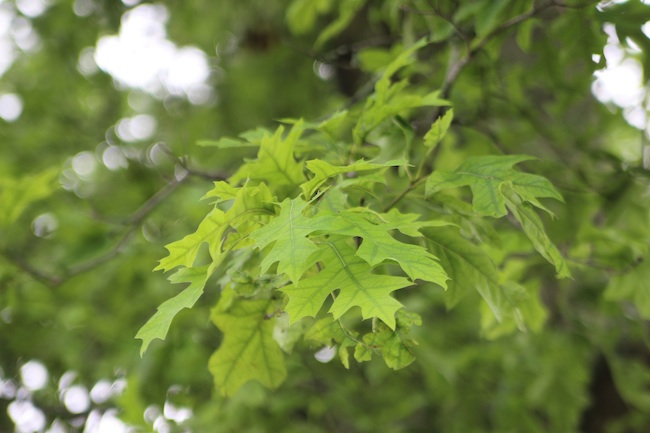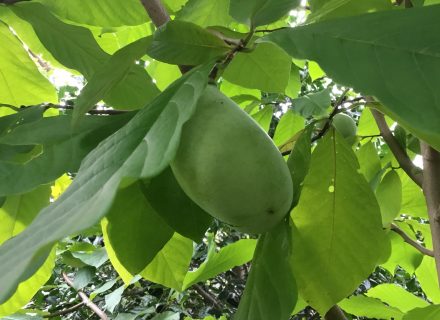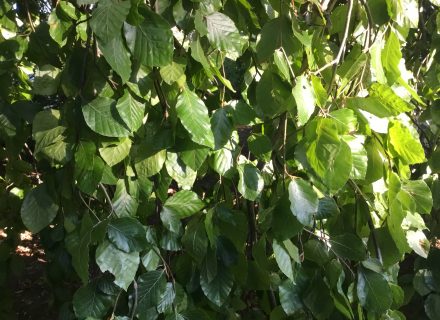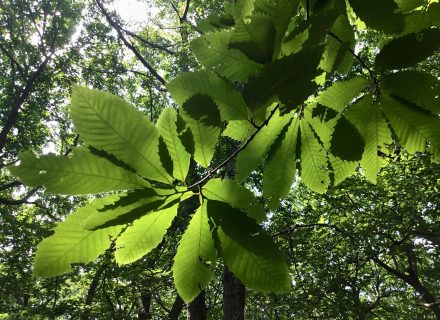Latin name: Quercus palustris
Location: A magnificent pin oak grows in the Town Center between the Library and Town Hall. Because this tree is unimpeded by other trees, it has a full, even spread on all sides.
Tree stats: The native pin oak ranges from the Midwest to the Northeast. The Latin word palus means swamp, which indicates this tree’s inclination for moist soil. Despite this, it’s a popular landscape and street tree that adapts to various soil conditions. The tree gets its common name from the short, slender twigs among its branches. Pin oaks typically grow up to 75 feet tall and 40 feet wide and are recognizable by their distinctive branching habit—pendulous at the bottom, horizontal in the middle, and upright at the top. The irregular, sharply-pointed leaves, which turn a handsome bronze in the fall, can be confused with those of the scarlet and black oak. Pin oak acorns are smaller than those of other oaks.
Natural history: Native Americans valued oaks for medicinal purposes and food, particularly the acorns, which were used to make bread. (A word of caution: if you try this at home you need to leach out the toxic, bitter-tasting tannins.) Deer, turkeys, squirrels, and blue jays also relish acorns. As many of us have observed, squirrels will eat some nuts and bury others for later consumption. In an arrangement that benefits both the squirrel and the oak, those that are forgotten can sprout into potential trees.
Friends of trees: Blue jays, with an ability to hold up to five small acorns in their expandable throat and upper esophagus, can “plant” nuts miles from parent trees. One study estimated a flock of jays transported 133,000 acorns from 11 pin oaks to faraway locations. Even more remarkable, some scientists believe that jays were indispensable in moving oaks northward as the Ice Age glaciers retreated.
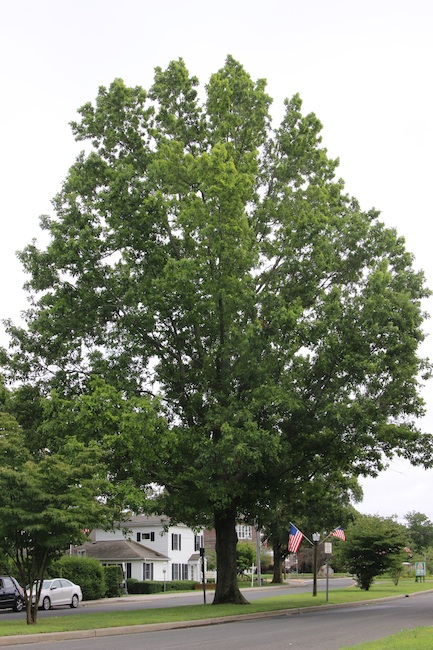
Oak Wilt alert: Homeowners should be on the lookout for any oaks that suddenly lose leaves in July or August. The trees may be infected with oak wilt, a fungus disease that prevents water from moving through the tree. Currently, there’s no cure. Contact an arborist if you suspect infection.
Oak inspiration: In his book, The Trees in My Forest, naturalist Bernd Heinrich provides a profound reason for planting oaks. “Planting nuts requires a vision for a future that goes beyond one’s mortal reach. If we envision ourselves as participants in the same grand, complex web of interactions as the forest, then planting acorns is like planting part of ourselves.”
Photos: Tim Purtell

